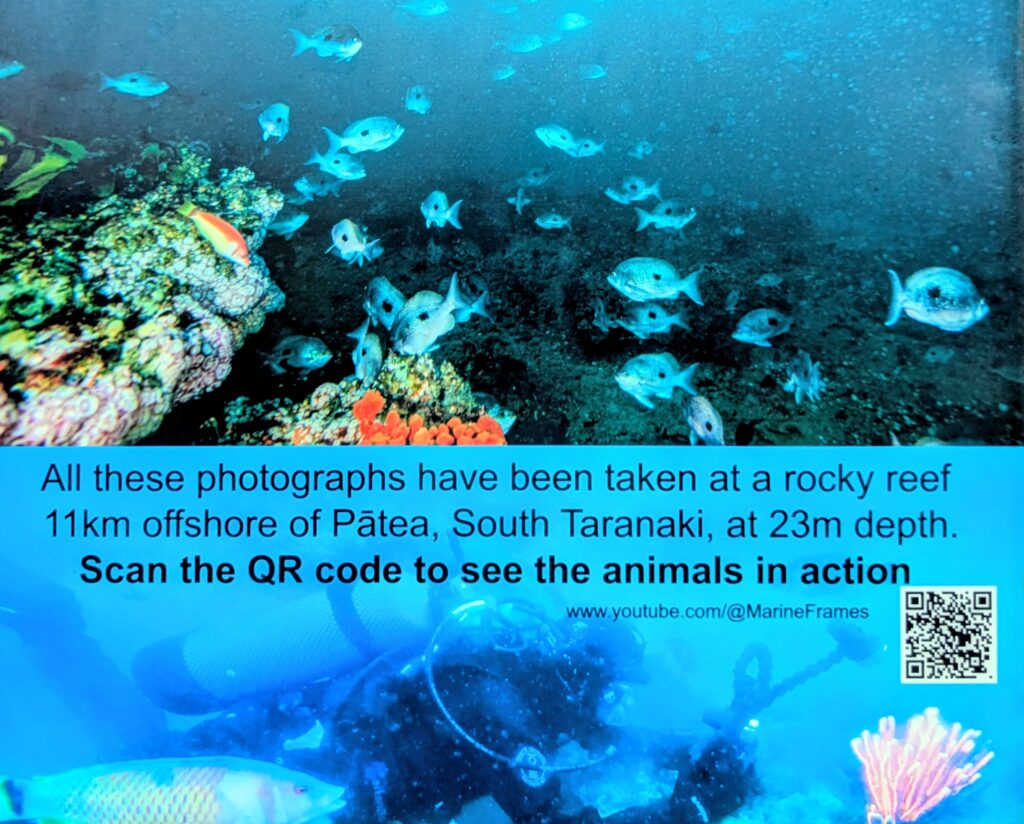Dec 5, 2025 Beach Comparison
We traveled north to picnic along the waterfront. About an hour later and a pleasant drive over coastal hills we reached Waipātiki Beach with it’s calmer water and tan sandy beach.
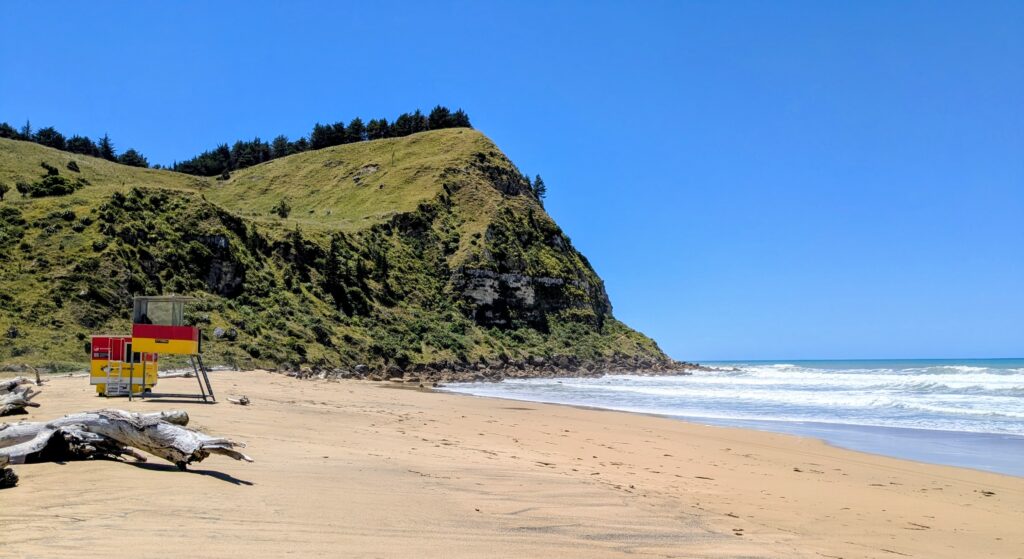
Even a lifeguard tower, unmanned today, so we didn’t swim!

The Pohutukawa trees are small enough here to see the feathery, fireworks burst of flowers up close. At the base of the long red petals is a drop of nectar that the local birds were busy licking up!
About half way back to Napier we stopped along the Pacific Coast Highway 2 at a picnic table to enjoy our sandwiches and compare this black cobble, pebble ‘beach’ with Waipātiki beach further north.
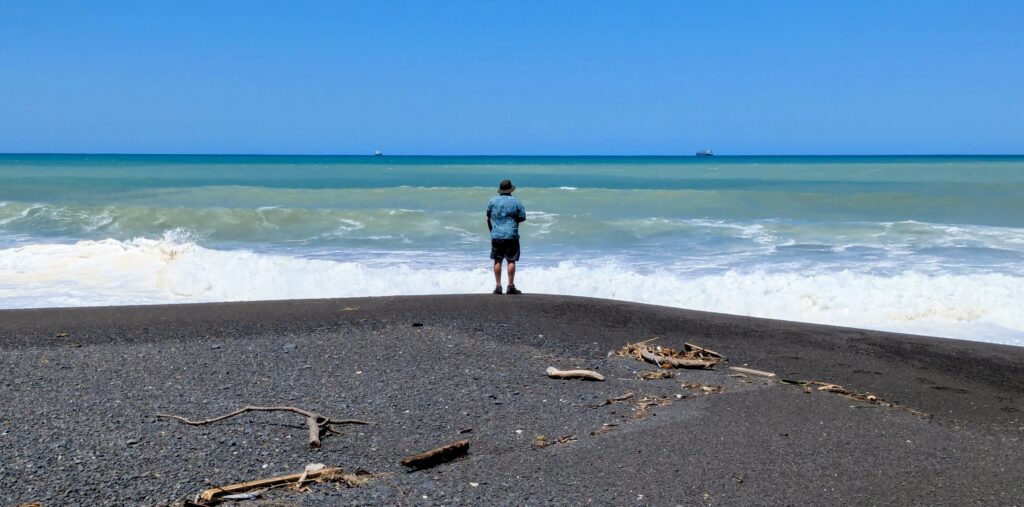
The waves here were much more powerful, you could see rocks and sticks rolling in the surf, as well as the steep drop-off right in front of Robert!
Dec 4, 2025 Between Napier and Hastings
We’ve been staying in Clive, about a 15 minute drive south of Napier, and 15 minutes north of Hastings, since Nov. 30. We will be here until Dec. 22, at a wonderful Airbnb cottage just a few blocks from the ocean. I can’t say ‘beach’ because the oceanfront along Hawke’s Bay here is not ‘beachy’, the shoreline is pebbles and cobbles and the surf is dangerous with steep drop-offs, strong undertows and unpredictable powerful waves! The hosts here provide us use of bicycles to ride the trails along the waterfront, and we took advantage for exploratory rides.
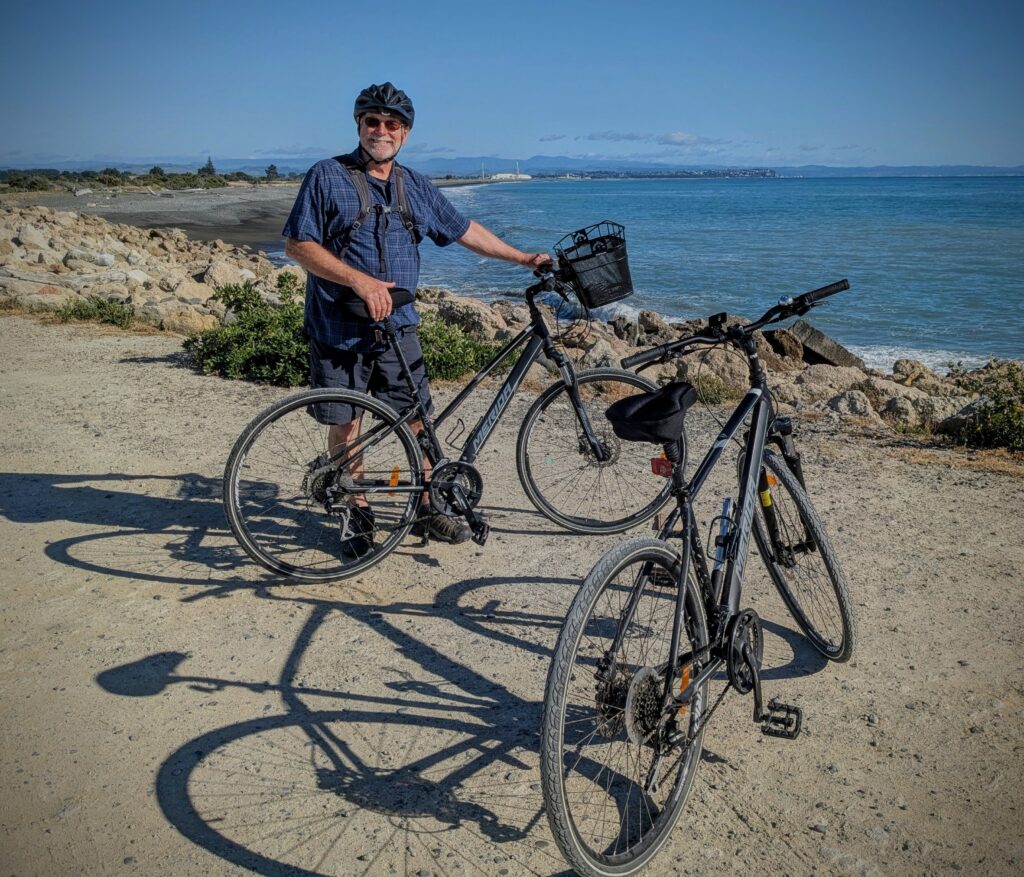
We discovered that though beautiful, the wind along the waterfront bicycle trails is usually strong, in one direction at least!
We also did some exploring by car!
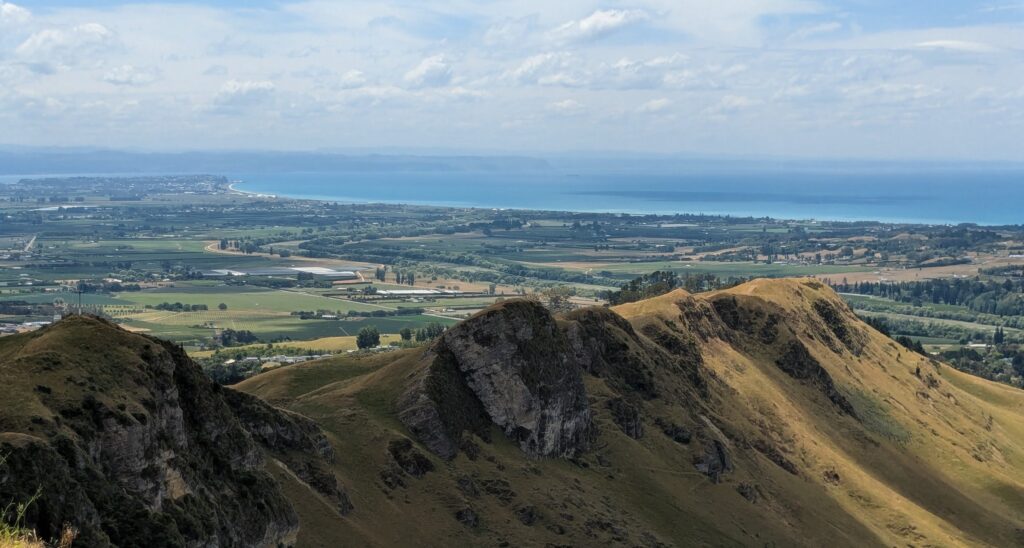
We drove up to Te Mata Peak to get a 360 degree view of the area. Napier is on the point of land in the left of the picture.
We also drove into Napier and up onto Bluff Hill for a view of the port below. Bluff Hill was almost completely surrounded by water prior to the devastating 1931 earthquake that leveled the brick-built center of the city and raised the seabed enough to drain the water from around the hill as well as the marshes to the north and east of the hill.
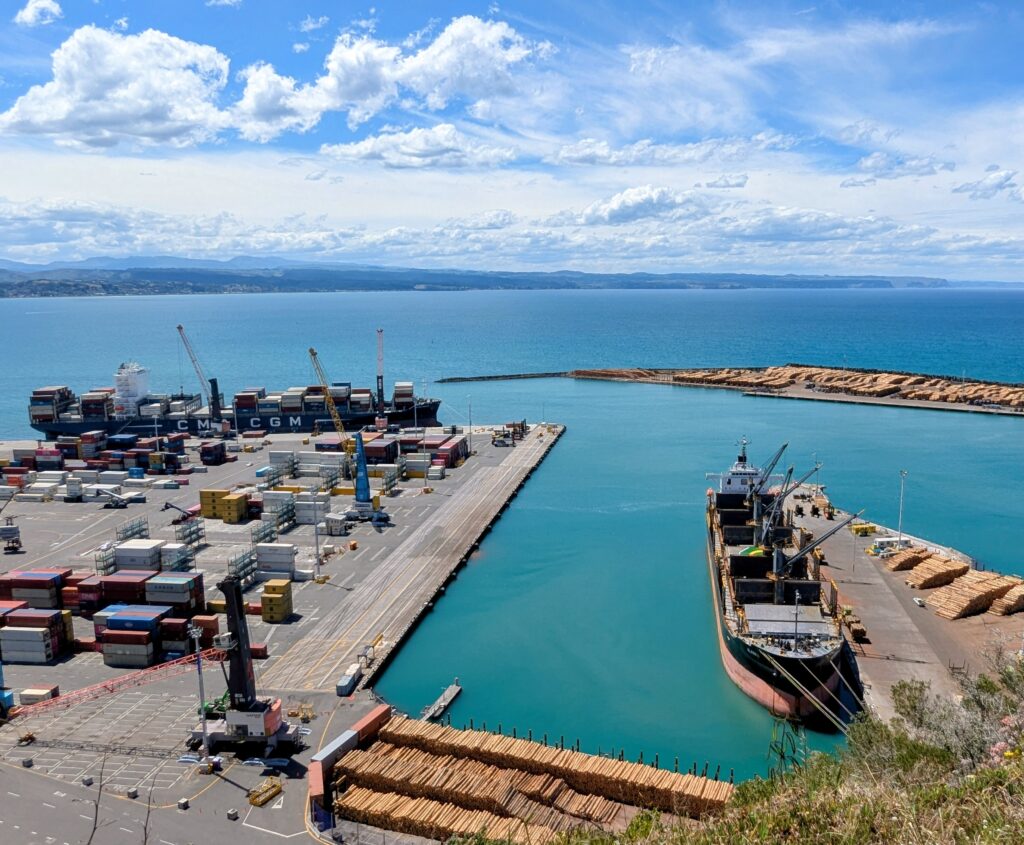
Looking down on the Port of Napier with loads of pine logs ready for shipping to the far east. The logs are from pine plantations established in the early 1900’s after the native forest was extensively logged. Occasionally a cruise ship is docked at the port!
Nov 30, 2025 Overland Trek
Moving day! We’re driving from the west coast to the east coast of the North Island, a four and a half hour drive. But of course it took us almost 7 hours! We stopped in the little town of Pātea to see the memorial to one of the Great Waka (canoe) of the Māori migration.
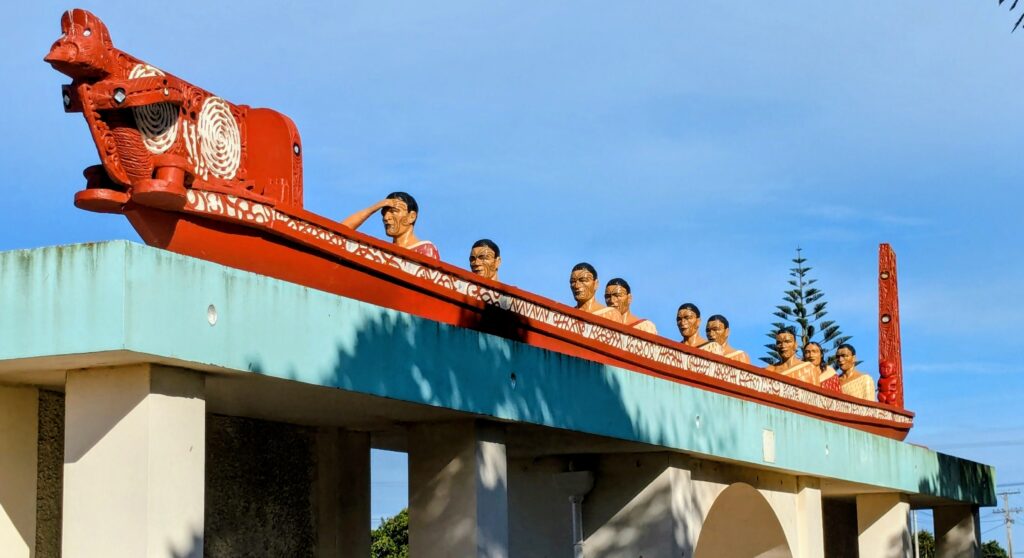
This is a memorial to the waka ‘Aotea’ one of the 50 waka from the oral traditions of the Maori; “These accounts give several different uses for the waka: many carried Polynesian migrants and explorers from Hawaiki to New Zealand; others brought supplies or made return journeys to Hawaiki…” (Wiki)
Then of course we had to stop for lunch!
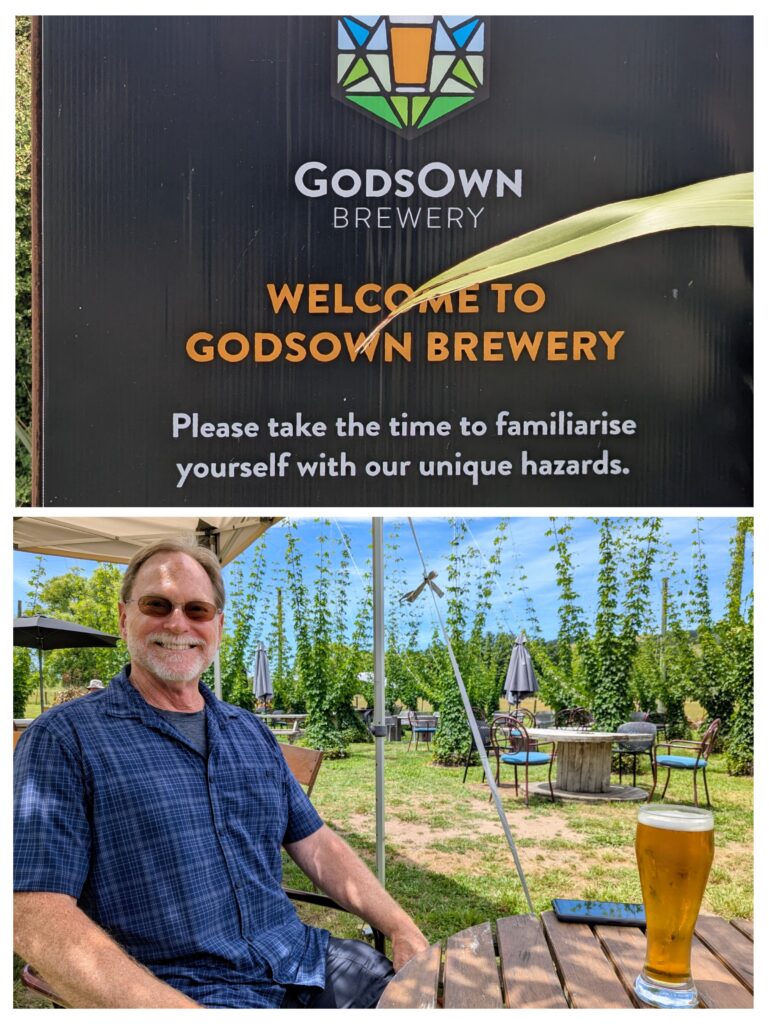
You can’t pass by “GodsOwn Brewery”! We had beer and pizza in the garden with the hop field in the background.
Nov 29, 2025 Wilkies Pools
Another beautiful day in Ohawe, our last full day. We decided to head up to Taranaki Maunga (mountain) for another short hike.
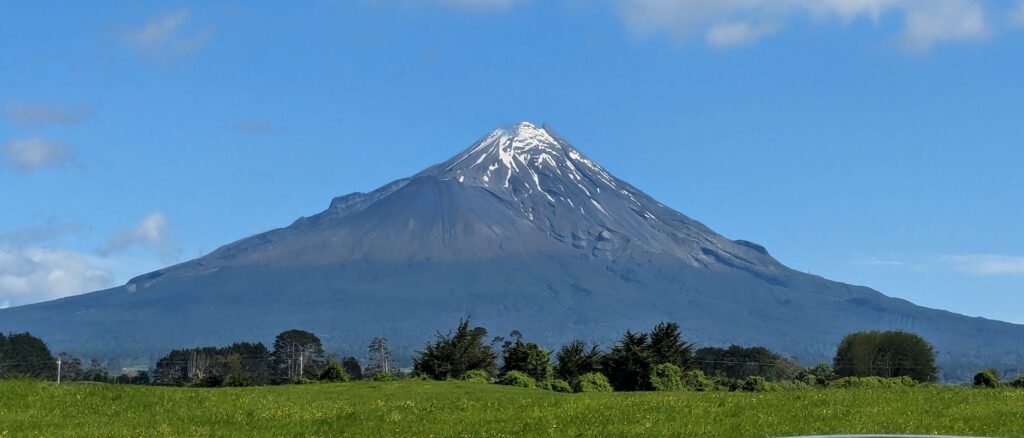
The peak is cloud free this morning!
We reached the Dawson Falls visitor center and started the easy uphill walk on a wide graveled path alongside Kapuni stream. We soon reached Wilkies Pools, named after brothers that farmed in the area until 1881 when a 6 mile radius around the summit was first protected as a forest reserve, becoming NZ’s 2nd National Park in 1900.
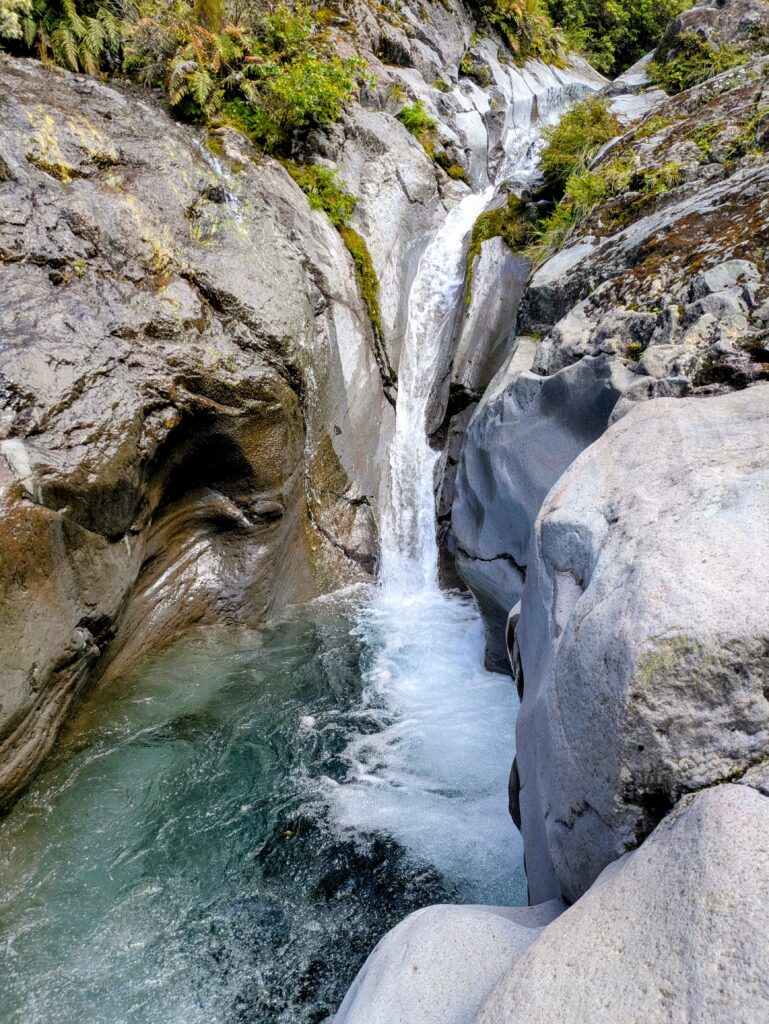
The crystal clear, cold water cascading down from the summit has carved a series of plunge pools down the volcanic rock for 20,000 years!
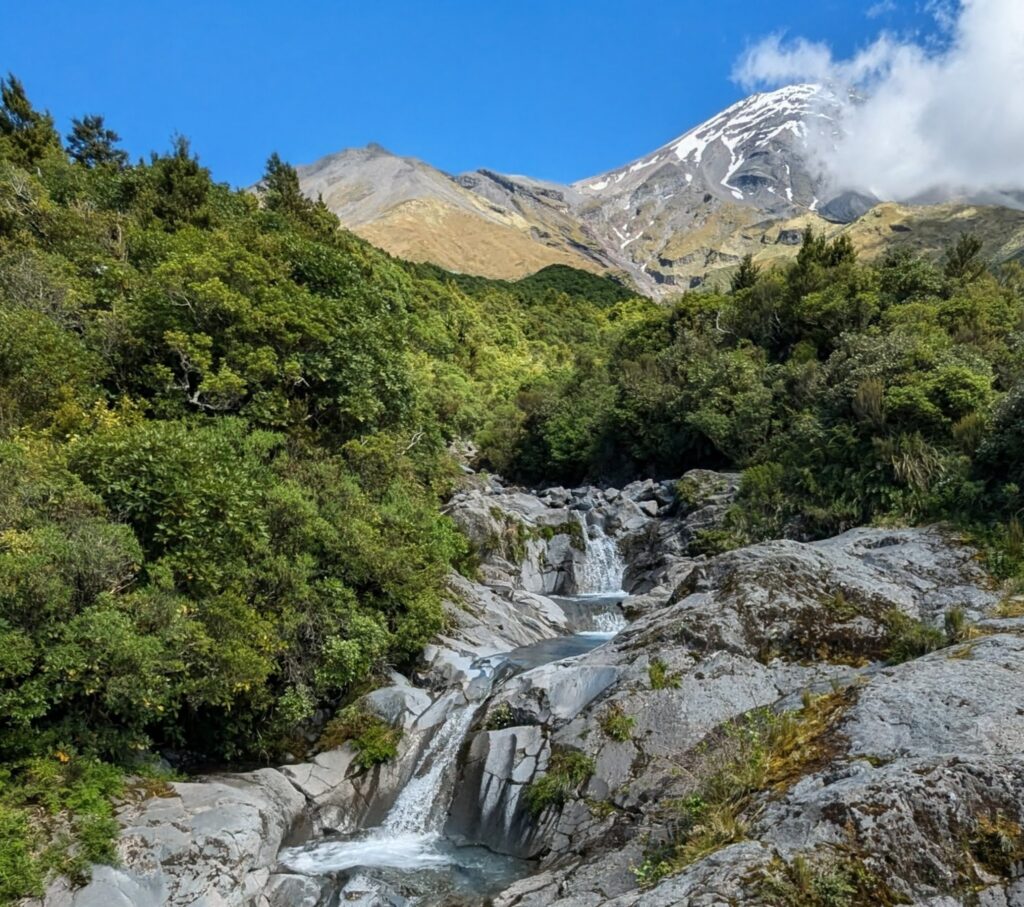
Looking up from the rocks gives a grand view of the summit above treeline. There were a pair of brave young men ‘taking the plunge’ today! Not hot out enough for me though!
We continued our walk back to the Visitors Center on the other side of the stream through the ‘goblin forest’ on a lesser used track. For great video of several slo-mo shots of the falls, click HERE.
Nov 28, 2025 Bonus Round!
There is a beautiful “Marine Frame” at Ohawe Beach parking area, with pictures of the undersea world off the coast here.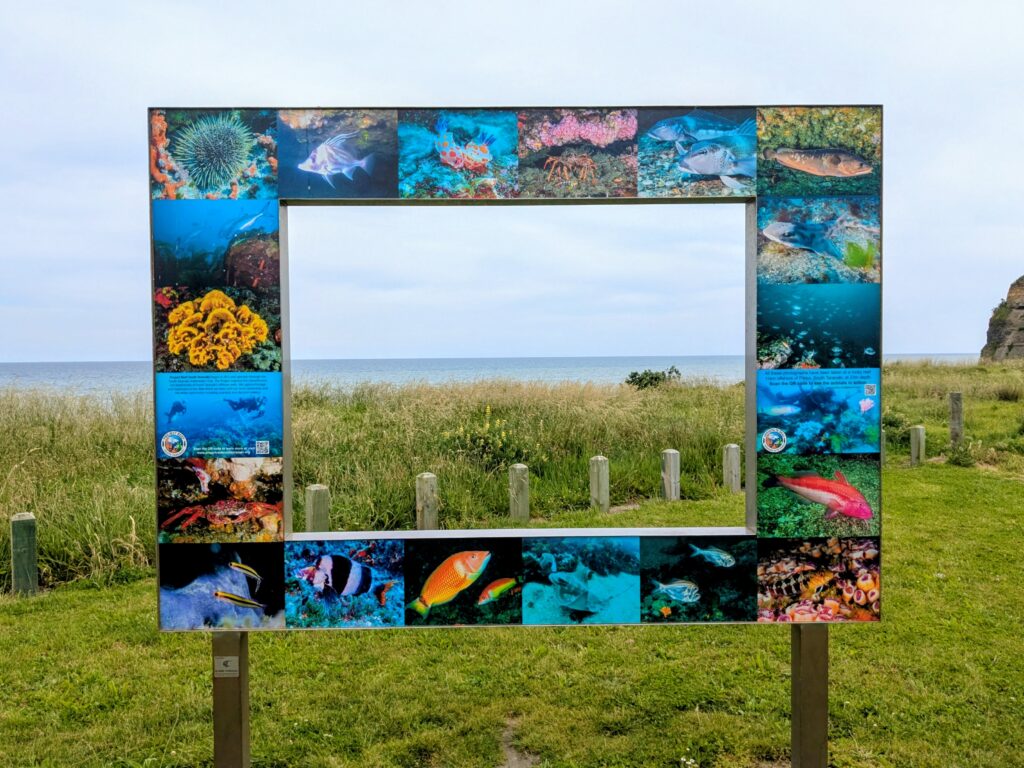
If you zoom in, as I did below, you can use the QR reader on your smart phone to bring up the link where you can see videos of all the pictures on the Frame! If you don’t have a smart phone you can go to
https://www;youtube.com/channel/UCcBaQxppUYG3bxc1_FUHtVw
